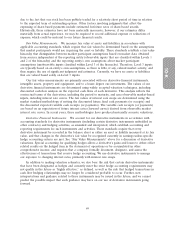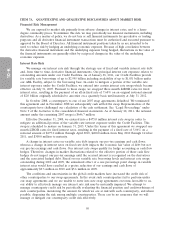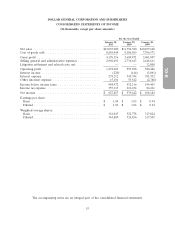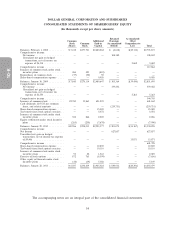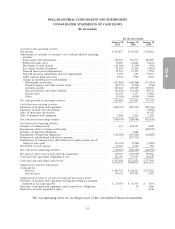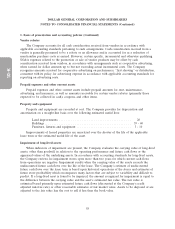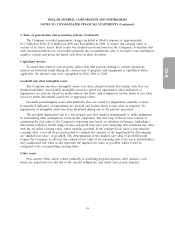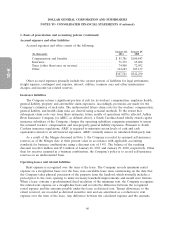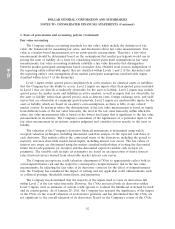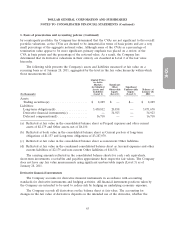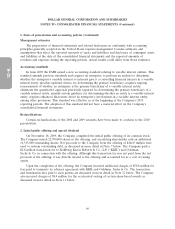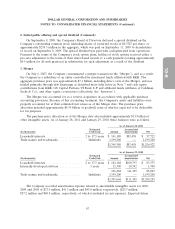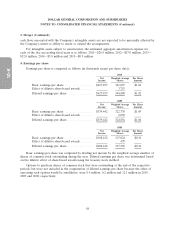Dollar General 2010 Annual Report Download - page 137
Download and view the complete annual report
Please find page 137 of the 2010 Dollar General annual report below. You can navigate through the pages in the report by either clicking on the pages listed below, or by using the keyword search tool below to find specific information within the annual report.
10-K
DOLLAR GENERAL CORPORATION AND SUBSIDIARIES
NOTES TO CONSOLIDATED FINANCIAL STATEMENTS (Continued)
1. Basis of presentation and accounting policies (Continued)
The Company recorded impairment charges included in SG&A expense of approximately
$1.7 million in 2010, $5.0 million in 2009 and $4.0 million in 2008, to reduce the carrying value of
certain of its stores’ assets. Such action was deemed necessary based on the Company’s evaluation that
such amounts would not be recoverable primarily due to insufficient sales or excessive costs resulting in
negative current and projected future cash flows at these locations.
Capitalized interest
To assure that interest costs properly reflect only that portion relating to current operations,
interest on borrowed funds during the construction of property and equipment is capitalized where
applicable. No interest costs were capitalized in 2010, 2009 or 2008.
Goodwill and other intangible assets
The Company amortizes intangible assets over their estimated useful lives unless such lives are
deemed indefinite. Amortizable intangible assets are tested for impairment when indicators of
impairment are present, based on undiscounted cash flows, and if impaired, written down to fair value
based on either discounted cash flows or appraised values.
Goodwill and intangible assets with indefinite lives are tested for impairment annually or more
frequently if indicators of impairment are present and written down to fair value as required. No
impairment of intangible assets has been identified during any of the periods presented.
The goodwill impairment test is a two-step process that requires management to make judgments
in determining what assumptions to use in the calculation. The first step of the process consists of
estimating the fair value of the Company’s reporting unit based on valuation techniques (including a
discounted cash flow model using revenue and profit forecasts) and comparing that estimated fair value
with the recorded carrying value, which includes goodwill. If the estimated fair value is less than the
carrying value, a second step is performed to compute the amount of the impairment by determining
an ‘‘implied fair value’’ of goodwill. The determination of the implied fair value of goodwill would
require the Company to allocate the estimated fair value of its reporting unit to its assets and liabilities.
Any unallocated fair value would represent the implied fair value of goodwill, which would be
compared to its corresponding carrying value.
Other assets
Non-current Other assets consist primarily of qualifying prepaid expenses, debt issuance costs
which are amortized over the life of the related obligations, and utility and security deposits.
59


